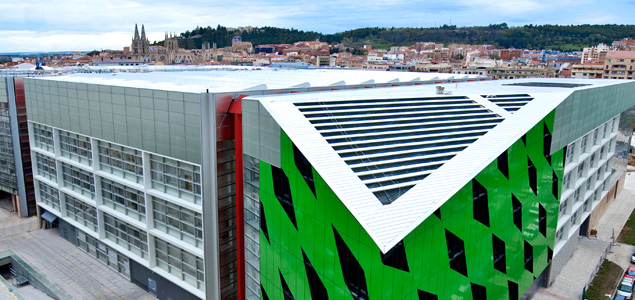Evolution complex
In 2000, the archaeological site of the Sierra de Atapuerca joined the list of UNESCO Heritage sites. After that, the government promoted the construction of the Human Evolution Complex in Burgos: three independent but interdependent buildings, physically separate but linked functionally and managed by different public administrations (national, regional and local) with the common goal of investigating and spreading knowledge.
The complex consists of:
- The Museum of Human Evolution, the cornerstone of the project.
- National Research Centre on Human Evolution (CENIEH).
- Auditorium and Congress 'Forum Evolución Burgos'.
CENIEH

The Spanish National Research Center for Human Evolution (known by its acronym in Spanish, CENIEH) was officially inaugurated in July of 2009 and is situated just to the left of the Human Evolution Museum. It is the "dream come true" of the Atapuerca Research Team. This center, which forms part of the Integrated Atapuerca Knowledgebase, is world-renowned because of the technological equipment that it houses and the cutting-edge scientific investigation carried out within its walls.
Laboratories, multipurpose rooms, large, open spaces, and work zones have all been designed to facilitate multidisciplinary research within the field of human evolution from different perspectives: the biochronological, paleoecological, geological, and technological, among others. In addition, this center drives and leads research projects at archaeological sites both within Spain and outside in countries located in Africa and Eurasia.
The CENIEH also proudly houses laboratories and storage facilities for the conservation, restoration, management, and registry of paleontological and archaeological collections coming from excavation at Atapuerca and other archaeological and paleontological sites of the Pliocene and Pleistocene periods. The center is directed by María Martinón, a member of the Atapuerca Research team, and has a full staff of researchers and specialized laboratory technicians at its disposal.
For more information about the CENIEH, please visit: